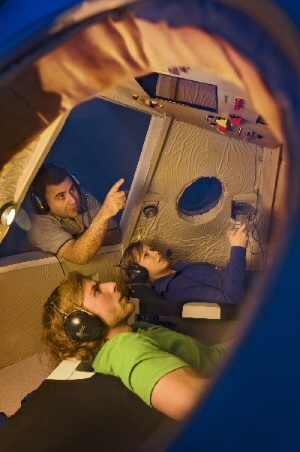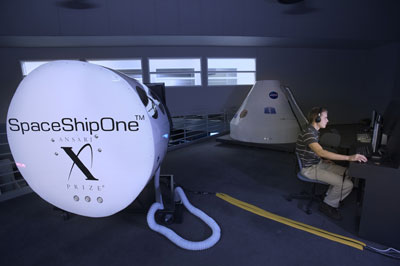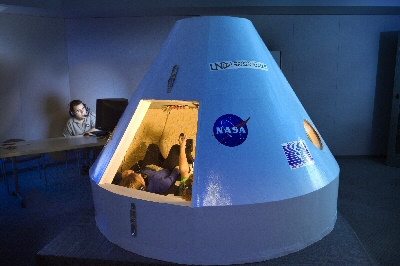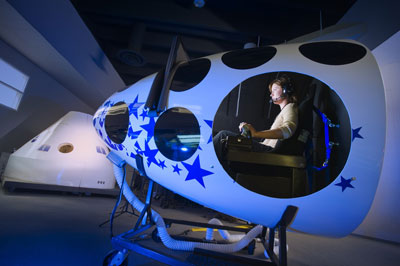Spacecraft Simulator Facility
Vertical Launch Simulator

The Apollo Capsule Prototype was designed and constructed by UND students from the Departments of Space Studies, Mechanical Engineering, and Electrical Engineering. Funds were provided through a grant from the North Dakota NASA Space Grant Consortium. The simulator is the approximate size of the original Apollo Command Module that took American astronauts to the Moon in the late 1960s and early 1970s, and it can accommodate three people at a time.
The capsule simulates launch, orbital operations, and landings of different space vehicles by means of the Orbiter Space Simulator and Satellite Toolkit STK software (see below), and is used for academic and research purposes by students enrolled in courses such as Life Sciences, Aviation, Orbital Mechanics, and Engineering. The use of the simulator is available on a limited basis for visitors to the UND campus and students, and a scheduled appointment is required.
Software
Satellite Toolkit is a software package developed by Analytical Graphics, Inc. The Orbiter Space Simulator is a software package developed and copyrighted by Martin Schweiger. The UND Space Simulator also uses Orbiter add-on packages provided by third parties. Currently, this includes Mercury and Gemini add-ons developed by Robert Conley.
Horizontal Launch Simulator

The SpaceShipOne prototype was designed and constructed by UND students from the Departments of Space Studies and Mechanical Engineering as part of a grant from the North Dakota NASA Space Grant Consortium. The construction was carried out by Cirrus Company, Grand Forks, ND during the summer of 2006 as part of a student internship, the main purpose of which was for the students to gain experience in constructing methods.
The simulator is the approximate size of the original SpaceShipOne, which was the first privately-built spacecraft to reach space in 2004. The vehicle accommodates one person at a time. It simulates launch, sub-orbital operations and landings, as well as drop-offs from high-altitude by means of the X-Plane Flight Simulator software, and is used for academic and research purposes by students enrolled in courses such as Life Sciences, Aviation, Orbital Mechanics, and Engineering. The use of the simulator is available on a limited basis for visitors to the UND campus and students, and a scheduled appointment is required.
Software
X-Plane is a flight simulator developed by Austin Meyer of Laminar Research.


